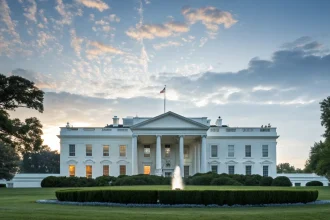The central government has announced an extension of the one-time option for its employees currently enrolled in the National Pension System (NPS) to switch to the newly introduced Unified Pension Scheme (UPS). This decision affects thousands of government workers who now have additional time to reconsider their retirement planning options.
The announcement comes as part of the government’s ongoing pension reform efforts, which have seen significant changes to retirement benefit structures for public sector employees in recent years. The extension provides eligible employees with more time to evaluate the potential advantages and disadvantages of both pension schemes before making their decision.
Understanding the Pension Options
The National Pension System, introduced in 2004, is a defined contribution scheme where both employees and the government contribute to an individual pension account. The final pension amount depends on the accumulated contributions and investment returns over the employee’s career.
In contrast, the Unified Pension Scheme offers a more traditional defined benefit structure. Under UPS, retired employees receive a guaranteed pension amount based on their service length and final salary, providing more certainty about post-retirement income.
The key differences between the two systems include:
- Investment risk: Under NPS, employees bear market risks, while UPS provides guaranteed benefits
- Contribution structure: NPS requires ongoing contributions from both employer and employee
- Benefit calculation: UPS typically links benefits to final salary and years of service
Implications for Government Employees
For central government staff, this extension represents a significant opportunity to reassess their retirement planning. Many employees who initially opted for NPS when joining government service now have the chance to switch to a scheme that may offer more predictable benefits.
“This decision gives employees more time to make an informed choice about their financial future,” said a senior official from the Department of Pension and Pensioners’ Welfare, speaking on condition of anonymity. “We recognize that pension decisions have long-term consequences, and employees deserve adequate time to consider their options.”
The government has not disclosed the exact deadline for the extended option period, though officials indicate that detailed guidelines will be issued shortly. Employees are advised to watch for departmental notifications regarding eligibility criteria and application procedures.
Financial and Administrative Considerations
The migration option carries significant financial implications for both individual employees and government finances. For employees, the decision involves weighing immediate contribution requirements against long-term benefit security. For the government, each employee who switches to UPS represents an increase in future pension liabilities.
Financial experts note that younger employees with many service years ahead might benefit differently from the option compared to those nearing retirement. The decision is particularly complex for mid-career employees who have already accumulated substantial NPS contributions but still have significant working years ahead.
The pension migration process will require substantial administrative coordination between various government departments, the Pension Fund Regulatory and Development Authority (PFRDA), and NPS trust managers to ensure smooth transfer of accumulated benefits for employees who choose to switch.
The government’s decision comes amid broader discussions about pension reform and retirement security across various sectors. Public sector unions have long advocated for a return to defined benefit pension schemes, arguing they provide greater security for retirees.
As implementation details emerge in the coming weeks, eligible employees are encouraged to carefully review official communications and seek financial advice before making this significant career decision that will impact their retirement years.









